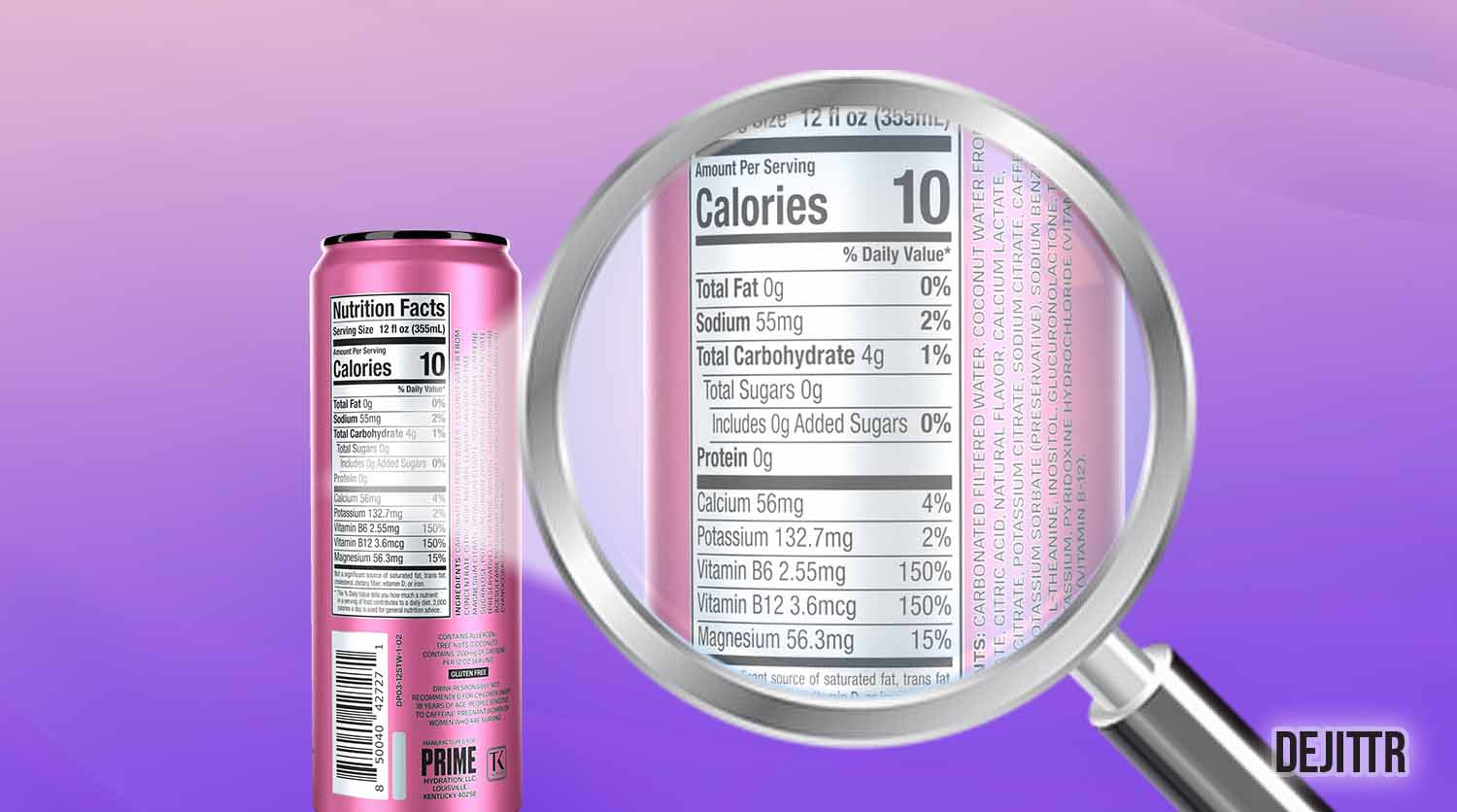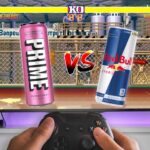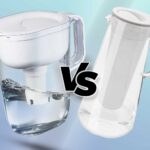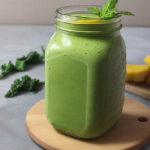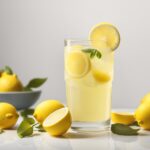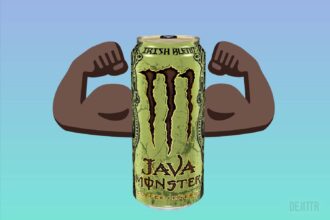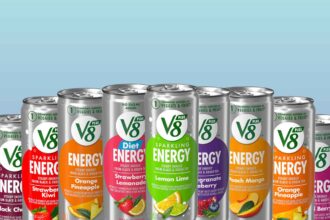If you’re in need of a pick-me-up to power through your day, you may be wondering if Prime Energy Drink is the solution.
Well, wonder no more! We have taken a deep dive into the ingredients of Prime Energy Drink to bring you an in-depth analysis of it.
Key Takeaways:
Prime Energy contains more caffeine than a typical energy drink. It has 86 g more caffeine than a similar sized 12 FL oz can of Red Bull, and 34 g more caffeine than a larger 16 FL oz can of Monster. Also, it has zero sugar due to it being sweetened artificially with sucralose.
Keep reading to find out more about the Prime Energy Drink ingredients and other related information.
What’s In Prime Energy Drink?
| Ingredients: | Advantages: | Possible Side-Effects: |
| Caffeine | Caffeine is the magic ingredient in energy drinks that gives you that extra boost when you need it most. Whether you’re pulling an all-nighter or trying to power through a tough workout, caffeine has got you covered with its ability to increase alertness, improve physical performance, and give you a much needed energy boost. | While caffeine can certainly give you a temporary energy boost, it can also lead to some not-so-fun side effects if you overdo it. Caffeine is a stimulant, and like all stimulants, it can cause jitters, anxiousness, and difficulty sleeping if consumed in excess. It’s important to remember to enjoy caffeine in moderation and to listen to your body’s needs. |
| Sucralose | Sucralose is a popular artificial sweetener that is often used in energy drinks to give them a sweet taste without adding calories. Because it is much sweeter than regular sugar, less of it is needed to achieve the desired level of sweetness, which can be beneficial for people who are watching their sugar intake. | One disadvantage of sucralose is that it is a synthetic sweetener, which means it is not found naturally in food. Some people may be hesitant to consume artificial sweeteners, preferring to stick with natural alternatives. As with all things, it’s important to consume artificial sweeteners in moderation and to listen to your body’s needs. |
| Magnesium Sulfate | Magnesium sulfate, also known as Epsom salt, is a naturally occurring mineral that is often added to energy drinks. In general, it is known to help reduce muscle cramps and soreness. | While magnesium sulfate is generally considered safe, it is important to be aware of the potential drawbacks. In terms of side-effect, it can cause diarrhea. |
| Sodium Citrate | It is a salt used in energy drinks that helps in regulating the pH levels. Its primary role is as an acidity regulator and preservative in these beverages. | The possible side effects of sodium citrate include bloating, vomiting and nausea. |
| Potassium Chloride | Potassium chloride (KCl) is a common ingredient found in energy drinks, along with caffeine and other ingredients that are intended to boost energy and improve focus. One of the roles of potassium in the body is to help regulate the balance of electrolytes, which are minerals that carry an electric charge. When we sweat, we lose electrolytes, including potassium, which can cause muscle cramps, fatigue, and other symptoms of electrolyte imbalance. | Nausea, stomach upset, and diarrhea are some of the possible side effects of consuming it. |
| Vitamin B | Vitamin B is a group of essential nutrients that play a key role in energy metabolism, by converting the food we eat into energy that the body can use. Adequate intake of Vitamin B can help to improve energy levels and cognitive function. | High dosages of vitamin B can lead to problems like vomiting, headaches, and high blood sugar levels. |
| Citric Acid | Citric acid is a common ingredient found in many energy drinks and is added for several reasons. The main advantage of citric acid is its ability to enhance the flavor and taste of the drink. It gives a tangy and fruity taste to the energy drinks, which increases the overall taste of the drink. Furthermore, Citric acid is a mild preservative that helps to prevent spoilage and increase the shelf life of the energy drink. It also helps to balance the pH level of the drink, which gives a more consistent taste from can to can. Citric acid is also a weak organic acid that can provide a mild stimulation of salivary flow, this might result in making the energy drink more refreshing. | One of the main disadvantages is that it can cause acid reflux in some people. |
| Coconut Water | Coconut water is a natural source of electrolytes, particularly potassium and sodium, which can help to hydrate the body and replenish fluids lost through sweat. | Excess consumption of coconut water can lead to diarrhea in some cases. |
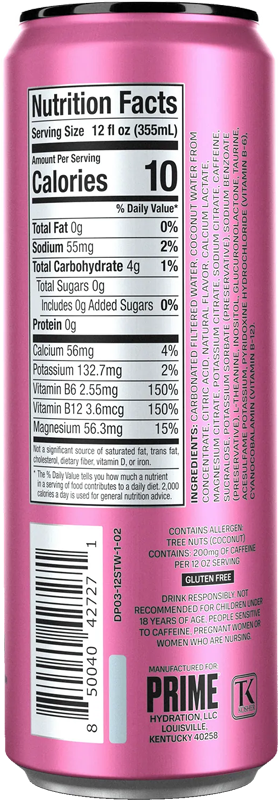
Caffeine Content Explored
What makes an energy drink an entry drink is its high caffeine content. Caffeine is added to energy drinks because it is a stimulant that can increase alertness, reduce fatigue, and improve concentration and focus.
This can help to improve physical and mental performance, making the drinks popular among athletes, students, and other people who need to stay awake and alert for extended periods of time.
Additionally, caffeine can also act as a mild appetite suppressant, which can be beneficial for people looking to lose weight.
How much caffeine is safe to consume?
The FDA states 400 mg of caffeine per day, is generally considered safe for healthy adults. Since Prime Energy contains 200 mg per can, drinking 2 cans will bring you up to that 400 mg threshold.
400 mg of caffeine is roughly equivalent to the amount of caffeine in four cups of brewed coffee or 10 cans of cola. It’s important to note that this is just a guideline, and individual tolerance to caffeine can vary.
Some people may be able to consume more caffeine without experiencing negative side effects, while others may be more sensitive and should limit their intake accordingly.
Pregnant or breastfeeding women and people with certain medical conditions should be especially careful about their caffeine intake and may need to consume less.
The recommended maximum daily intake by Health Canada and The European Food Safety Authority (EFSA) is also 400 mg.
Does Prime Energy Have Artificial Sweeteners?
If you have read our post on Prime Hydration drink ingredients, you may already know about artificial sweeteners.
Unfortunately, like the hydration version, Prime Energy drink also contains an artificial sweetener known as Sucralose.
Sucralose is a type of artificial sweetener that is commonly used in energy drinks. Like other artificial sweeteners, its safety has been a topic of debate among scientists and health experts.
Some studies suggest that sucralose is safe to consume and does not cause any negative effects on health. However, as per healthline, more recent research has suggested that consuming large amounts of sucralose may have an impact on the metabolism.
In general, although Sucralose is a bit questionable ingredients present in Prime Energy, renowned health institutes like FDA consider it safe.
Alternatives To Prime Energy Drink:
If you’re looking for an energy boost but want to try something other than Prime Energy, there are plenty of other options to choose from.
Red Bull, Monster Energy, and ZOA are just a few of the many energy drink brands on the market that offer a quick and convenient way to get a burst of energy when you need it most.
If you’re looking for a boost of energy but want to steer clear of energy drinks, there are plenty of tasty and healthy alternatives to choose from! Here are a few ideas:
Fresh fruit smoothies: Blend up some of your favorite fruits with a splash of water or milk for a natural energy boost that’s packed with vitamins and minerals.
Green tea: This ancient beverage is rich in antioxidants and has a natural dose of caffeine to help keep you alert and energized.
Coffee: Whether you prefer it hot or iced, coffee is a classic choice for a quick energy boost. Just be sure to watch your intake, as too much caffeine can lead to jitters and sleeplessness.
Final Verdict:
As with any energy drink, it’s important to consume it in moderation and be aware of the amount of caffeine packed into each can and the artificial sweeteners.
Up Next: Best Time To Drink Energy Drinks And When To Avoid Them


